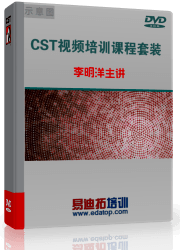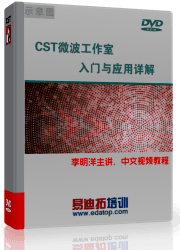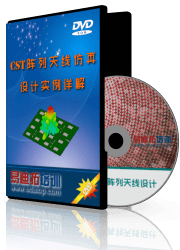- 易迪拓培训,专注于微波、射频、天线设计工程师的培养
物理光学消隐计算
神马意思?消影计算?
物理光学算法,需要计算目标的可见部分;实际计算过程中这是十分耗时的;如果能实现100万个三角形在一秒内完成消隐计算,将极大的提高物理光学算法的计算速度。
我用KD_TREE场景加速,比一般的八叉树要快好多
FEKO消隐计算,没采用计算机图形学,直接计算三角形面元相互之间的可见性。
FEKO消隐计算,没采用计算机图形学,直接计算三角形面元相互之间的可见性。
Feko的po算是很慢的了,只要稍许懂哈西表之类,轻松一秒一百万
能否较为详细的介绍一下你的工作呢?按你的说法,千万量级也能非常快的得到计算结果。
我是专做电磁场算法的,主要是fdtd和po
目前速度和容量是2亿网格互相判断八百秒
不用显卡图形加速,纯CPU实现
怎么实现消隐呢?
很不错,但如此算来,100万未知量约4秒解决消隐计算;不用GRECO,纯CPU实现100万一秒以内,看来还是有难度的。
用PO算出电流后由电流算远场,结果不对,不知道问题在什么地方,特到论坛求教,忘熟悉PO算法的博主不恋赐教,先谢过。
当前正在想办法计算,物理光学,没消隐计算的结果是不准确的。本人刚接触物理光学,希望做电磁计算的高手多多指导,先谢过
有没有专注做物理光学算法的?
没难度,EastFDTD的PO的遮挡判断的复杂度只有 n^2 * m,其中m是个常数。
interesting! O(N^2*m) complexity, that is not good for shadowing, we expect O(N) complexity.
very interesting! O(N^2*m) complexity, that is not good for shadowing, we expect O(N) complexity.
不好意思写错了,应该就是O(N),哈哈!因为我们内部习惯和频率f比较,所以多挂了个平方符号。
最近的测试表明,在Core i5 (sandy bridge) 3G机器/8GB(单通道)内存的情形下,计算了一个150万左右三角形的F5E飞机,可以达到每核心(线程)19万三角形/(GHz*s)的高速性能(总速度是19万*12=228万三角形/s),开启加速功能(非GPU硬件加速)后可以达到30-40万以上;如果是大型舰船,这个加速比更高。
8GB内存可以计算2000-2500万三角形的模型,64GB内存可以处理2亿三角形。
此外,我们在离散化超巨型模型的速度是FEKO的10倍以上;并且,对于普通PC电脑,如果内存升到顶,仍然觉得需要计算更大模型时,我们可以用固态硬盘进行扩容,并且速度的降低程度可以容忍(依赖于SSD自身的性能,主要是IOPS指数)。
我们的算例还包括一个假象的300米级别前苏联航母,计算频率为1GHz,单站RCS,可以在64GB内存的过时服务器上完成。
实际上就是O(N),哈哈,之前写错了,因为我们习惯和频率或者波长比较。
Very good. right now it is clear for me, for example, we have \lambda \times \lambda plate, if we subdivided the side with 10 segment, we will got \lambda^2/50 triangles. The total number of triangles approximate 1/(f^2).
By the way, you mean the mesh generator in EASTFDTD is 10 times faster than FEKO?
In PO solver, the shadow judge time is including the buffer or tree construction procedure?
My meaning is: when the mesh is ready, we will record the total time for the buffer or tree construction and the shadow judge procedure for the judgement.
I expect your reply for this question.
Regards!
Daopu
(1)离散化快
(2)消隐也快
都是高数倍的速度。之所以提到离散化问题,是因为这个计算在离散化的时候可能产生峰值内存,操作速度很慢很慢,使用经验表明高频下往往FEKO还没离散化完EASTFDTD(PO)已经全算完了。
very good, but you still not answer my question: FASTFDTD PO solver shadow judgement based on pixels or based on triangles?
Thanks!
I can imaging what you are talking about the compoexity: O(N^2*M), actually, I think M is the number of pixels on the screen, for each pixel, FASTFDTD will check on all triangle, the triangle is cover this pixel or not...
I can imaging what you are talking about the compoexity: O(N^2*M), actually, I think M is the number of pixels on the screen, for each pixel, FASTFDTD will check on all triangle, the triangle is cover this pixel or not..., this kind of shadow judgement algorithm will be very fast!
I can imaging what you are talking about the compoexity: O(N^2*M), actually, I think M is the number of pixels on the screen, for each pixel, FASTFDTD will check on all triangle, the triangle is cover this pixel or not..., this kind of shadow judgement algorithm will be very fast!
I think I'm clear now!
CST微波工作室培训课程套装,专家讲解,视频教学,帮助您快速学习掌握CST设计应用
上一篇:FEKO仿真时出现directivity cannot be computed
下一篇:怎么查看导入FEKO的3D模型尺寸












 沪公网安备 31011202014168号
沪公网安备 31011202014168号
 1427313829
1427313829 旺旺在线
旺旺在线 Skype Online
Skype Online 13761612886
13761612886 官方淘宝店
官方淘宝店
